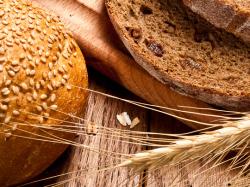Breakthroughs In Bringing Whole Grains To Kids
December 7, 2010 | 3 min to read

Feeding a child is a profound act. The foods we invite into our children's bodies determine how their organs will develop and function the rest of their lives." -Dr. Alan Greene
Dr. Greene, one of America’s leading pediatricians, spoke the words above at a Whole Grains Council conference in early 2006, and they’re truer than ever, almost five years later. I’ve always loved that phrase “the foods we invite into our children’s bodies” because it reminds me that choosing foods should be a conscious act. Letting just any old thing into your kids’ mouths (or your own!) is like taking the doors off their hinges and letting just anyone wander into your house, regardless of the damage they might do once they get inside.
“Anything goes” eating is affecting all too many kids. Childhood obesity has tripled in the past 30 years, from 6.5% of kids to 19.6% in 2008, and more and more children are developing type 2 diabetes, a disease usually diagnosed in adults 40 years or older (CDC).
That’s why we’re glad to see some bold new efforts to help kids (and the grown-ups responsible for them) get more healthy foods, especially whole grains. In today’s blog, we’re giving a shout-out to three such efforts.
The Healthy, Hunger-Free Kids Act
This week the U.S. Congress passed a landmark child nutrition bill, including a small funding increase for the federal school meals program and national nutrition standards for all foods served in schools, both in and out of the cafeteria. The bill, championed by Michelle Obama, was passed last summer by the Senate, and is expected to be signed by President Obama.
While the bill itself does not spell out any specifics on whole grains, we expect that standards recommended last fall by the Institute of Medicine will be used in implementing the bill. These standards echo those of the WGC, with 8g of whole grain per serving seen as a minimum for whole grain foods.
Let every child’s first grain be a whole grain
Dr. Alan Greene, whose quote started off this blog, has started a new campaign to encourage mothers to feed their babies whole grains from the start. The tastes we form in infancy can influence our preferences for life, and this approach could create a whole new generation of kids who just naturally see whole grains as the norm for grain foods. Whole grains matter more than ever at a time when kids’ bodies are developing most rapidly, so why not get them started on the right foot?
Sesame Street’s Whole Grain Muppet
Just before Thanksgiving, Sesame Workshop announced that it’s introducing four new “Superfoods” Muppets, including a whole grain roll. The characters will be seen for the first time on PBS on December 8th (check local listings) and will also be distributed directly to 400,000 families in a video that “features Elmo and friends, along with real families as they try new foods, learn about the importance of healthy snacks, and discover that sharing a meal together is a perfect opportunity to connect as a family.”
The Sesame Street effort reminds me of another great program that introduces kids to the importance of good foods: the OrganWise Guys. This is a program that looks at the other end of the equation: our major organs, and how they’re affected by what we eat. The OrganWise Guys are ten cuddly plush characters – Calci M. Bone, Sir Rebrum, Hardy Heart, Luigi Liver, Peter Pancreas, the Kidney Brothers, Madame Muscle, Pepto, Windy, and Peri Stolic — that “Teach Children how to be smart from the inside out.” As any parent who’s watched their kids bond with a stuffed animal can imagine, children who make friends with Hardy Heart or Calci M. Bone are much more likely to care about what happens to their own hearts and bones. Peri Stolic, who represents the colon, features heavily in the program’s Food of the Month kit on whole grains. (Cindy)
Source: Whole Grains Council
